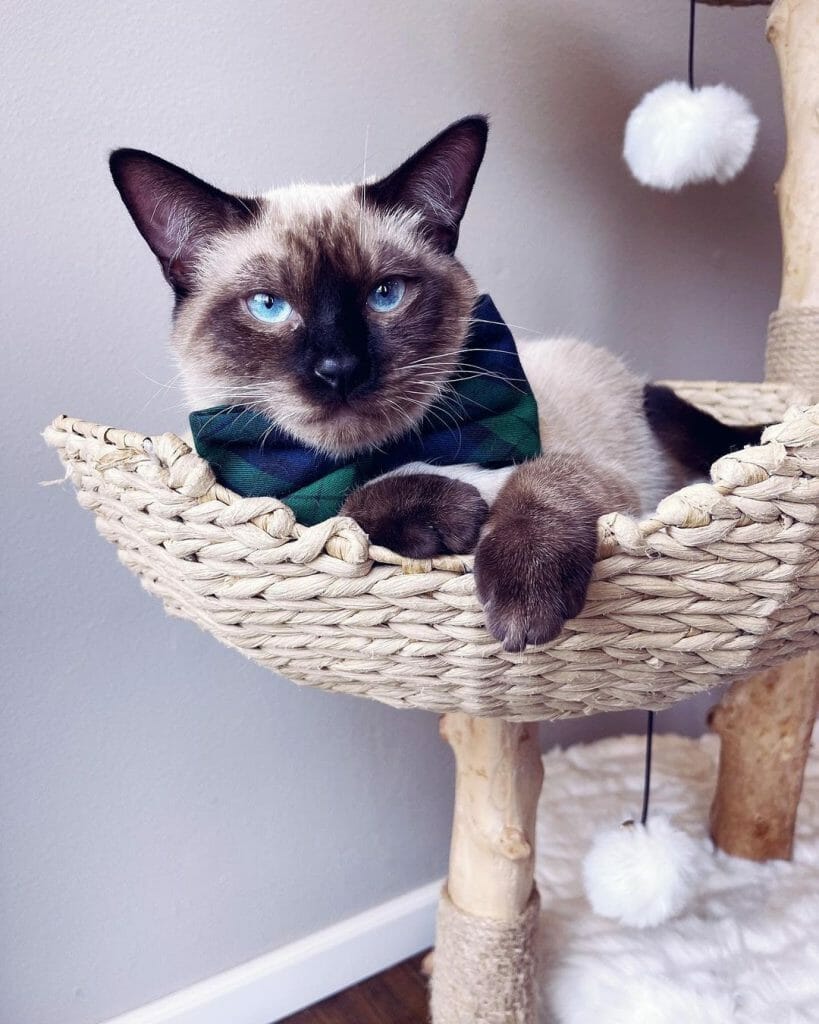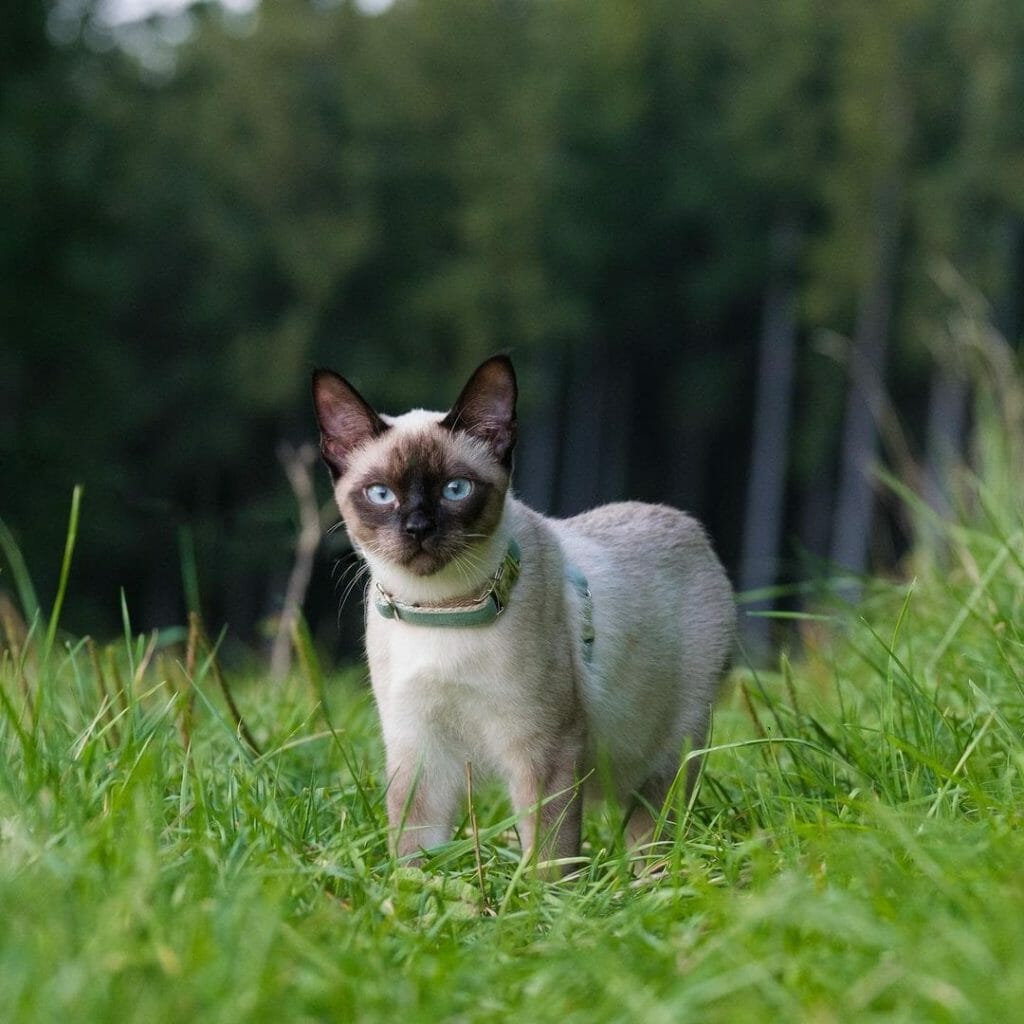When Do Siamese Cats Stop Growing? Learn About Siamese Growth and Facts!
So, you have just brought home the perfect cat for you- a Siamese kitten! With so much fascination toward this breed, you can even end up becoming perplexed about his whole nature. There is so much about this cat that would surely interest you and this always includes what to expect once he grows into a mature and fully developed feline.
Cats, no matter the breed, grow individually, but in a general sense, the Siamese, in particular, takes a minimum of 12 months before he physically stops adding in more height and weight. This regal cat from Thailand not only amazes us with its beauty but as well as the many mysteries we are yet to discover through this article. Let’s dive in!
Table of Contents
What Is the Average Height and Weight of a Siamese Cat?
Concerning height, Siamese cats have an average that falls somewhere between 8 to 12 inches (20cm to 31cm). This is measured by starting at the lowest part of their body which is the foot up to the withers or the shoulder of the cat. Meanwhile, the common range of weight for the breed is expected to be around 8 to 14 pounds. The weight only becomes ideal if it complements rightly the exact height of the cat.


If you want to know the typical horizontal measurement of the breed, the length from the tip of the nose up to the butt goes somewhere around 9 to 14 inches (25cm to 36cm). If you add up the tail, then, of course, they will be even longer!
All Phases a Siamese Cat Undergoes
As much as you were intrigued by how much time it would take for a Siamese cat to stop growing, it is just equally essential to find out all the phases he goes through. By learning what transpires in all his developmental stages, you will also be able to understand a bit more about the special Siamese breed. All that will be unraveled below:
Kitten Phase (0 to 6 Months)
A newborn kitten is always a treat in our eyes. As expected, it is so tiny that it cannot even take up all the space in your palm. He has several baby features such as a small pair of ears, a pinkish and soft nose and paws, a tiny and pointed tail, a fragile body, and a set of eyes that do not open yet. While he’s still young, the color-points he is widely known for do not show right away. That means the whole fur is in the shade of white.
By the first week, you will begin seeing loads of physical changes. He will gain a substantial weight in the second week which can be twice as much as his weight when he was newly born.
Junior Stage (6 Months to 2 Years)
At around 6 months of age, the Siamese cat is already in a sizable physical appearance but not as large as he would be compared to an adult Siamese. As others would say, the junior stage is an awkward phase. The Siamese is not an adult, but also not a kitten!


His points start to look even stronger as his body temperature changes with lifestyle such as weight gain and activity, but anyways, physical development-wise, the Siamese cat should slowly fill in the remaining weight that is ideally expected from the breed. The moment he is one or two years of age, you can safely assume that his current size is his final form.
Adulthood (2 to 10 Years)
Between 2 to 2 years, the Siamese cat is considered to be at the prime of his growth. He will continuously maintain his adult size unless, of course, he happens to experience conditions that may affect his height such as a bad posture. This is also a phase when lots of changes in his body will take place. Take note, change is different from growth. What we refer to here is his possibility of gaining too much weight or losing it to the point of becoming malnourished.
Make sure he is well taken care of during this period as this is also a sort of preparation on what his condition will be the moment he gets old.
Geriatric Period (10 Years and Older)
It is important to explain that growth will no longer be affected once the cat surpasses the one or two-year mark. However, there will be significant differences that will occur compared to his appearance while he was still an adult. In an investigation concerning body compositions, it was found out that cats, including the Siamese breed, generally experience a drop in body mass if they are lean in the physique. This is when they become 12 years old or older.
Possible Reasons Why Your Siamese Cat Stops Growing
Various reasons come to mind as to why your Siamese cat suddenly stops growing. Aside from the common fact that reaching adulthood also means achieving the ultimate height and weight, other more factors can come into play.
Let’s check them out below:
- Gender And Environment. If you have a male and a female Siamese cat, you’ll notice the male acquiring more mass while the female’s growth comes to an end. This is because just like in humans, the animal kingdom also prominently experiences size differences according to gender. Males take a long time to fully mature.
The environment is another thing. A stray Siamese will have fewer and inconsistent resources, therefore, complete and balanced nutrition is not guaranteed to support his growth.
- Genetics. If the parents of the Siamese are small, chances are that the offspring will also mature in the same size. If this is the case, waiting will be in vain if you expect the Siamese cat to grow even bigger even after reaching 2 years of age.
- Disease. An example would be Cushing’s syndrome. This largely affects growth as it can either cause it to progress slowly or even delay it. Consult your vet if you suspect that something is wrong with your cat’s growth.
- Food Inadequacy. It is a no-brainer that lacking the right food and nutrients can cause stunted growth. Having insufficient vitamins, minerals, protein, fats, water, and carbohydrates would cause a weak foundation for your cat’s development. His bones and muscles will not develop at their best state and worse is that food inadequacy can also affect his cognitive abilities.
Can a Siamese Cat Be Skinny as He Grows?
Naturally, Siamese cats are known to be skinny! They have long, slender bodies, which, if they move or walk, make them appear like they’re born royals. However, if your Siamese cat appears to be extremely scrawny, then you need to check on his diet plan. It could be that he is not eating the right amount of cat food or he has some underlying conditions that cause him not to put on weight as he develops. It is crucial to address this issue as soon as possible since each stage in his life is vital in ensuring that he lives a long lifespan.
